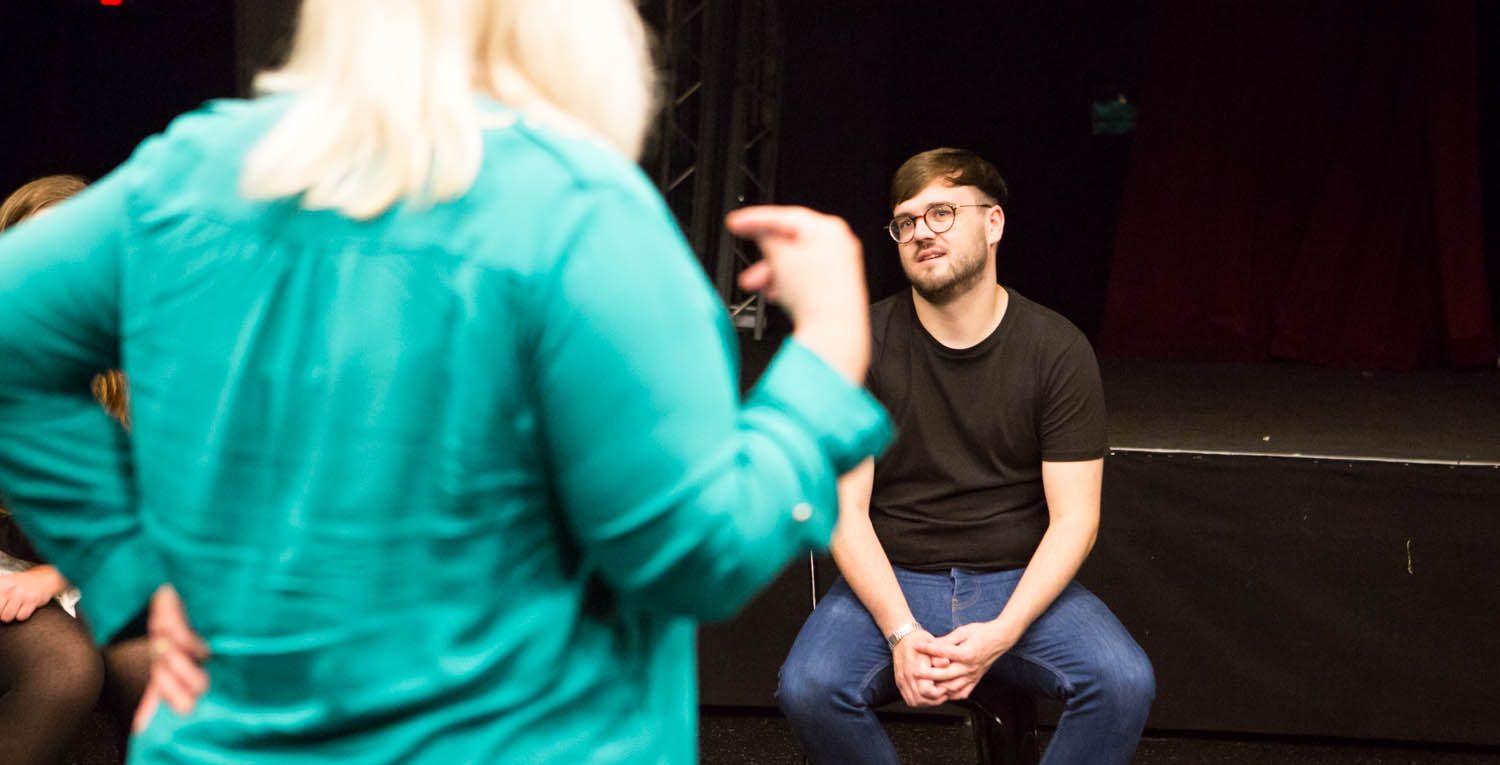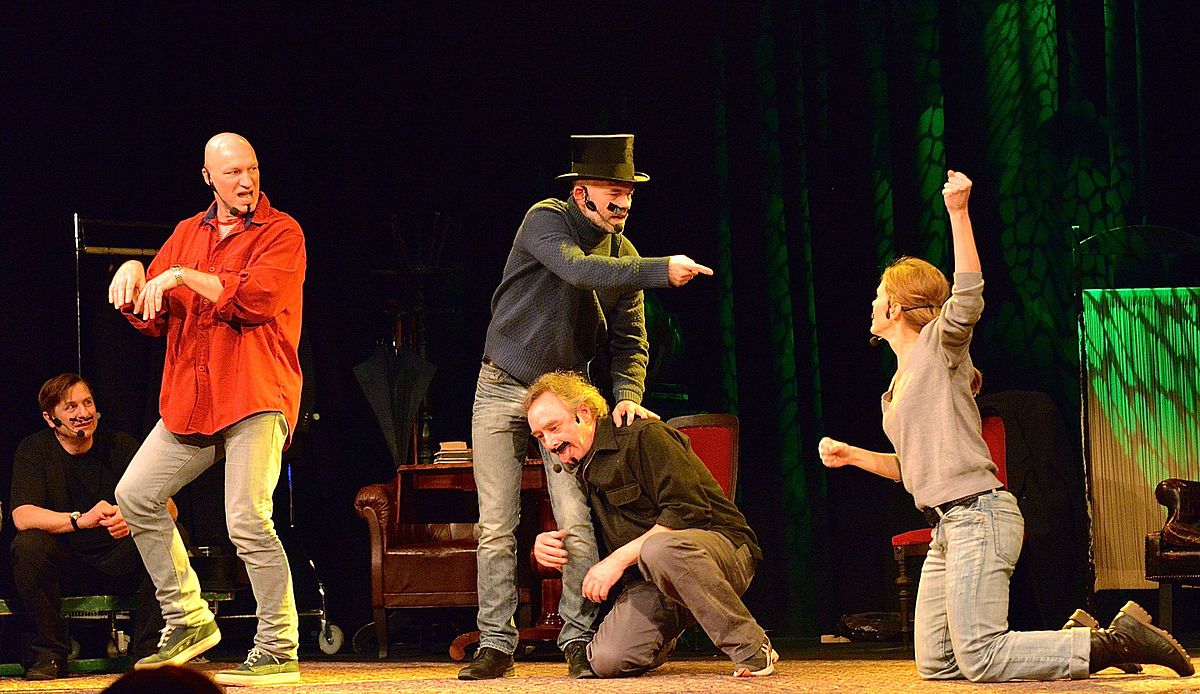Improvisational acting, or improv, is a unique and dynamic form of performance where actors create scenes, dialogues, and characters on the spot without a script. Unlike traditional acting, which is often rigid and rehearsed, improv relies on spontaneity, creativity, and collaboration. For many actors, improv is an essential skill that helps them think on their feet, build confidence, and work better with others.

Why Do Actors Do Improv?
Improvisation offers actors far more than just an entertaining performance style. It is a powerful tool that helps actors develop key skills essential for their craft. While some actors engage in improv for comedy, others use it to refine their abilities to adapt, react, and stay authentic in their performances. Improv is not only about making an audience laugh; it serves as a training ground for deeper, more nuanced acting.
The Benefits of Improvisation for Actors
Improv offers numerous benefits to actors, helping them grow both on stage and off. Some of the key benefits include:
- Enhanced Creativity and Spontaneity: Improv forces actors to create something out of nothing, which nurtures their creative muscles. The constant need to respond to unexpected situations or lines hones their ability to think quickly and adapt.
- Increased Confidence: Improv pushes actors to step out of their comfort zones. They must trust their instincts, take risks, and often make bold choices in front of an audience. Over time, this builds a deep sense of confidence in their acting abilities.
- Improved Listening and Collaboration: A successful improv scene depends heavily on the actors’ ability to listen to each other and build on each other’s ideas. Improv teaches actors to be better listeners, which translates into more authentic interactions on stage or screen.
- Adaptability on Stage: Improv helps actors become more flexible, both mentally and physically. If something unexpected happens during a performance—whether it’s a forgotten line or a prop malfunction—improv training prepares actors to handle it smoothly.
- Better Audience Interaction: Improv actors often perform directly in front of live audiences, learning to read the room, pick up on energy, and adjust their performance in real-time. This experience can be invaluable for actors performing in theater or live events.
Famous actor and comedian Robin Williams often credited his improv background for helping him deliver spontaneous and energetic performances. As he once said, “Improv helps you be free… it makes you a better actor because it teaches you how to be present.”
Improv in Different Acting Settings
Improv has found a home in several different acting environments, from comedy clubs to Hollywood sets. While many people associate improv with comedy, its application goes far beyond humor.
- Improv in Theater: In live theater, actors may rely on improv to adapt to unexpected moments, such as a technical issue or a fellow actor missing their cue. For experimental and devised theater, improv can be a critical part of the rehearsal process, allowing actors to explore characters and situations more organically.
- Improv in Film and TV: Many film and television directors encourage actors to improvise during takes to create more natural, spontaneous moments. For example, several iconic scenes in movies were the result of improvisation, including Robert De Niro’s famous “You talkin’ to me?” line from Taxi Driver. Directors such as Judd Apatow often rely on actors like Seth Rogen and Paul Rudd to improvise their lines, which has become a hallmark of his comedic style.
- Improv in Auditions: Auditions often include an improv component to test an actor’s ability to think on their feet. Casting directors use this as a way to gauge whether an actor can handle changes in direction and remain flexible under pressure. Many actors have landed roles not from delivering perfect memorized lines, but from their improv ability to showcase their adaptability and creativity.
In short, improv is an incredibly versatile tool that can be applied in various acting contexts, from stage to screen, and even in corporate or educational environments.
/actors-rehearsing-on-stage-156410654-5c7c2ff5c9e77c0001fd5a14.jpg)
How Do Actors Prepare for Improv?
While improv may appear spontaneous and unplanned, actors spend a significant amount of time honing their skills to become proficient in this form of acting. Preparation for improv goes beyond memorizing lines; it’s about training the mind and body to react quickly, stay present, and remain flexible in a constantly changing environment. Actors who are skilled in improvisation often follow structured training routines and engage in specific warm-up exercises to ensure they are mentally and physically ready for the unexpected.
Training for Improv
Actors looking to develop their improv abilities often enroll in improv classes that focus on building core improvisational skills. These classes range from introductory workshops to advanced-level training, with different schools of thought and methods. Below are some of the most popular types of improv training:
- Short-Form Improv: Short-form improv is based on quick, game-like scenes that usually last between 1 and 5 minutes. These games focus on specific challenges, such as creating dialogue within a particular constraint (e.g., only speaking in questions). A popular example of short-form improv is the TV show Whose Line Is It Anyway?, where actors engage in rapid, humorous scenes.
- Long-Form Improv: Long-form improv involves extended scenes that are often interconnected and can last up to an hour. It emphasizes character development, storytelling, and scene progression. One of the most famous long-form formats is The Harold, developed by improv pioneer Del Close, where a series of unrelated scenes eventually connect in unexpected ways.
- Character-Based Improv: Some improv training focuses specifically on creating and developing characters quickly. Actors are taught to explore different personalities, physicalities, and backgrounds to bring characters to life in an instant. This is essential in long-form improv, where characters may evolve throughout the scene.
- Musical Improv: Musical improv is a more niche form, where actors create songs on the spot, complete with lyrics and sometimes choreography. This requires an additional set of skills, including timing, rhyme, and rhythm.
Popular improv schools and training centers include The Second City in Chicago, Upright Citizens Brigade (UCB) in New York and Los Angeles, and The Groundlings in Los Angeles. Each of these institutions has produced actors who are now household names, including Amy Poehler, Will Ferrell, and Kristen Wiig.
Warm-Up Exercises for Improv
Before stepping into an improv scene, actors often engage in warm-up exercises designed to loosen the mind and body, boost creativity, and promote collaboration with fellow actors. These exercises help remove mental blocks and ensure that actors are ready to respond to anything that happens in the scene.
Here are some common warm-up exercises used by improv actors:
- Zip, Zap, Zop: This is a popular group game used to sharpen focus and quick thinking. One actor says “Zip” while pointing at another, who then says “Zap,” and so on. The goal is to pass the words as quickly as possible without breaking rhythm.
- Word Association: In this exercise, actors say a word related to the word spoken by the previous actor. This exercise helps loosen creative thinking and encourages spontaneous connections between ideas.
- One-Word Story: This is a group exercise where each actor adds one word to a story, continuing where the last person left off. It teaches actors how to build on each other’s ideas, and the stories often end up being humorous and unexpected.
- Mirror Game: In pairs, actors mimic each other’s movements and facial expressions as closely as possible, without leading. This promotes strong physical awareness and strengthens the connection between actors.
These exercises are not just fun; they are critical to helping actors get into the right mindset for improv. They create an atmosphere of playfulness, eliminate nervousness, and promote trust among the group. As actor and comedian Stephen Colbert once said, “Improv teaches you that there are no mistakes, only opportunities.”

Key Principles of Improvisation
Improv may seem chaotic, but it actually operates on a set of fundamental principles that guide actors through the process of creating spontaneous scenes. These principles help actors navigate unpredictability while ensuring that their performances remain cohesive and engaging. Whether an actor is performing in a comedic setting or a more dramatic scene, adhering to these principles is crucial for success in improvisation.
“Yes, And” – The Foundation of Improv
One of the most important and widely recognized principles of improv is the concept of “Yes, And.” This principle serves as the foundation for almost every improvisational scene, enabling actors to build on each other’s ideas and keep the scene moving forward.
- “Yes” means that actors should always accept what their scene partner offers, whether it’s a line of dialogue, an idea, or a new direction for the scene. Rejecting or negating an idea can cause the scene to stall or collapse.
- “And” means that actors should then add something of their own to the idea. By contributing new information or expanding on the established premise, the scene grows more complex and interesting.
For example, if one actor says, “Look, there’s a spaceship landing in the backyard!” and the other actor responds with “That’s not a spaceship, it’s just a balloon,” the second actor has rejected the first actor’s offer, which diminishes the potential of the scene. In contrast, a response like “Yes, and I think they’re coming to take us to Mars!” builds on the initial idea and opens up exciting possibilities for the rest of the scene.
This approach encourages collaboration, as actors work together to create something larger than what either could have done alone. According to improv expert Keith Johnstone, “The first rule of improvisation is to agree. Always agree and say yes. When you’re improvising, this means you are required to agree with whatever your partner has created.”
Listening and Reacting in Improv
Listening is arguably the most important skill an improv actor can develop. In improvisation, actors must be fully present and attuned to their scene partners, paying close attention to every word, gesture, and tone. This allows them to react genuinely and help propel the scene forward.
Unlike scripted acting, where actors memorize lines and cues, improv requires actors to respond in real time. Good listening helps actors pick up on subtle details and use them to enhance the scene. For example, if one actor expresses nervousness by tapping their foot, a good improviser might notice and address it in the dialogue: “I can see you’re nervous—don’t worry, the interview will go just fine!”
By responding to these small cues, actors create more believable and engaging scenes. Active listening also helps avoid one-sided performances, ensuring that actors aren’t simply waiting for their turn to speak but are instead fully involved in the give-and-take of the scene.
Building Characters on the Spot
In improv, actors often have little to no time to develop a character before stepping into a scene. Instead, they must create characters in the moment, relying on physicality, voice, and imagination to bring them to life.
Some key tips for building characters quickly in improv include:
- Physicality: The way a character moves, stands, or gestures can instantly communicate their personality. For example, a character who slouches and shuffles their feet may come across as shy or uncertain, while someone who stands tall and moves confidently exudes power.
- Voice: Altering tone, pitch, or speed can drastically change a character. A fast-talking, high-pitched character may be seen as anxious or excitable, while a slow, deep voice could suggest calm authority.
- Emotional Commitment: No matter how outlandish a character may seem, it’s essential that actors fully commit to their choices. A half-hearted performance can feel unconvincing, while genuine emotional commitment makes even the wildest characters feel real.
Improv actors also often use character archetypes to quickly establish who they are in the scene. Archetypes like “the hero,” “the villain,” or “the quirky sidekick” are instantly recognizable and give actors a foundation to build on. These archetypes can then be subverted or expanded upon as the scene progresses.